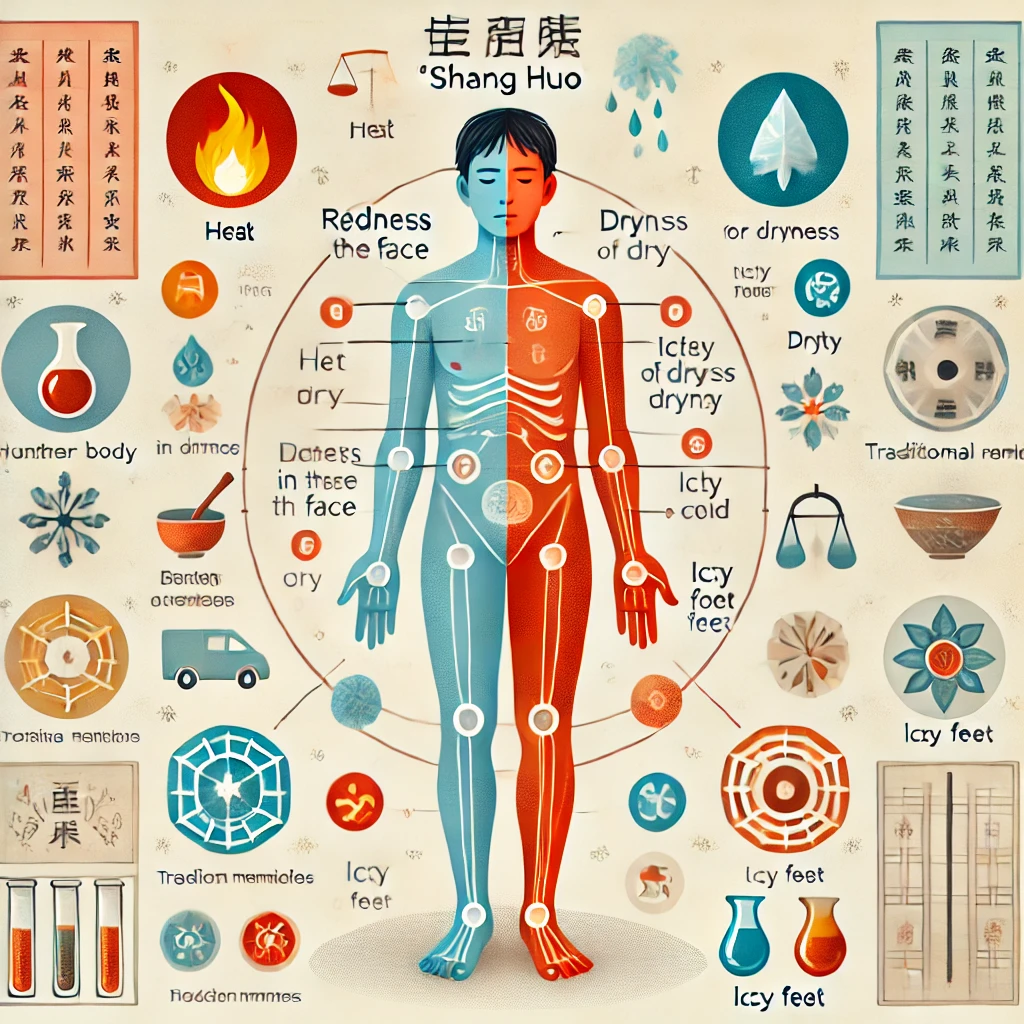"Shang huo" has misled people for thousands of years
No cold, no fire
In everyday life, "shang huo" seems to be everywhere:
- Dry mouth and throat - "shang huo"
- Headache and heat sensation - "shang huo"
- Red cheeks and eyes - "shang huo"
- Pimples on the face - "shang huo"
- Liver fire, stomach fire, heart fire, lung fire, small intestine fire - everywhere is "shang huo"
Especially many women who are naturally weak and sensitive to cold are quick to shout "shang huo" when they eat some spicy food or drink a hot soup.
Doctors seem to share this enthusiasm, paying much attention to "putting out the fire". Both traditional Chinese and Western medicine focus on cleansing heat and lowering fire. One of the four traditional Chinese medical schools even specialises in "putting out fire".
But is the body really that full of fire? Is it real fire, or just mock fire?
In reality, "shang huo" is not caused by excess heat, but by cold and weakness in the body. These lead to reduced functionality and slower metabolism, which in turn causes stagnant heat. This is then seen as "shang huo".
Normal "shang huo" can be attributed to stress and pressure in daily life, or excessive consumption of alcohol, cigarettes, or spicy food. These are external factors and can usually be regulated by the person.
The human body and animals survive by temperature. This temperature usually remains constant and is better at dropping than rising. As soon as the body temperature rises, it is called a fever. Only when the temperature drops do people become weaker, metabolism slows down, and waste accumulates, leading to "shang huo" and illness.
Almost all cases of "shang huo" stem from cold followed by heat, with symptoms including a warm upper body (red cheeks and eyes) and a cold lower body (cold legs and feet). This shows that the person has a cold and weak body condition. Even fever is often caused by cold.
Traditional Chinese medicine
"Where there is fire, there is cold. Without cold, there is no fire."
In traditional Chinese medicine, symptoms such as a red face and red eyes are often immediately attributed to liver fire, stomach fire, or an abundance of internal heat. But rarely is attention paid to the temperature of the legs and feet. This superficial diagnostic model has led to a skewed theory within traditional medicine: "Fire abounds, while yin always falls short." As a result, treatment often focuses on cleansing heat, misleading society.
Why does "shang huo" perform?
People with low body temperature and weakness have reduced organ functionality. This leads to slower blood circulation, metabolism and physiological activities. In particular, the stomach and intestines, which are sensitive to temperature, slow down their functioning. In people with a cold constitution, food, fat and fluid accumulate in the intestines. This accumulation produces heat and toxins, leading to symptoms such as a red face, headache, mouth ulcers and fever in the upper body. This is what is referred to as "shang huo".
Many people think the body is too hot and the "fire" needs to be put out. But this is a misunderstanding. In reality, one has to look at the essence: the cold state of the lower body.
When experiencing "shang huo", it is essential to check the temperature of the legs and feet.
In older people, especially over 40, "hot above, cold below" is a common phenomenon. In post-menopausal women, this becomes even more prominent. The colder the body, the more severe the symptoms. This is not caused by real heat, but stagnation heat.
Chronic conditions such as sore throats, mouth ulcers, sinusitis and gum disease are often aggravated by heat. Superficially, they appear to be symptoms of "shang huo", but in reality they arise from a cold condition.



Add comment